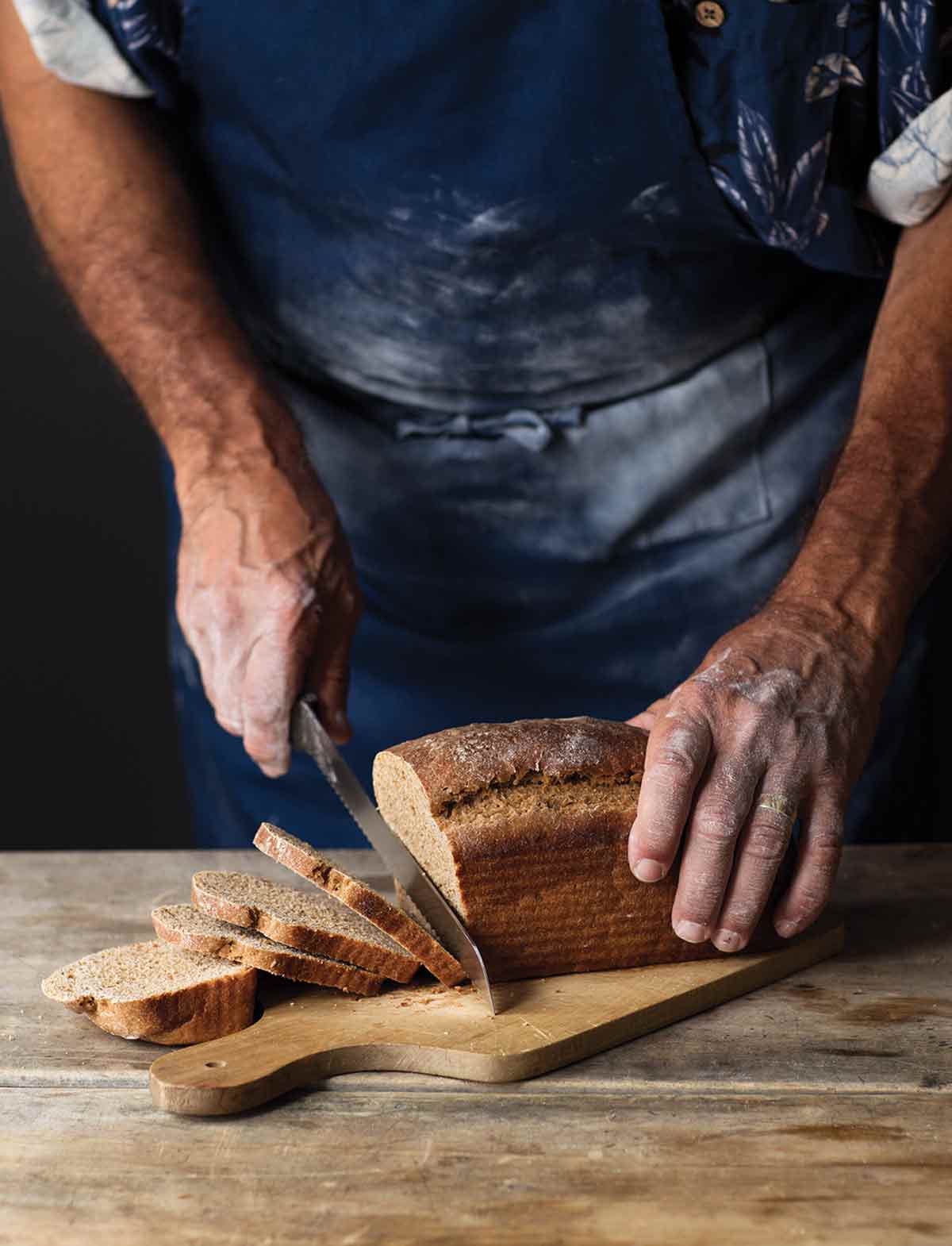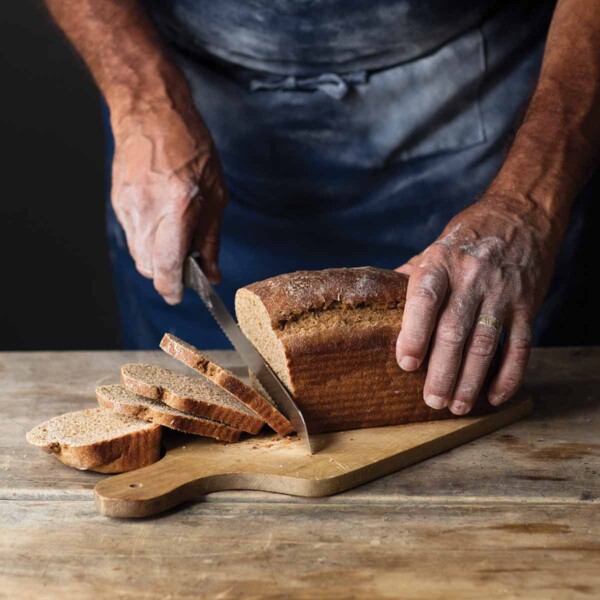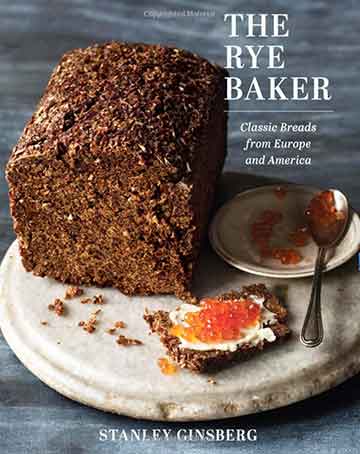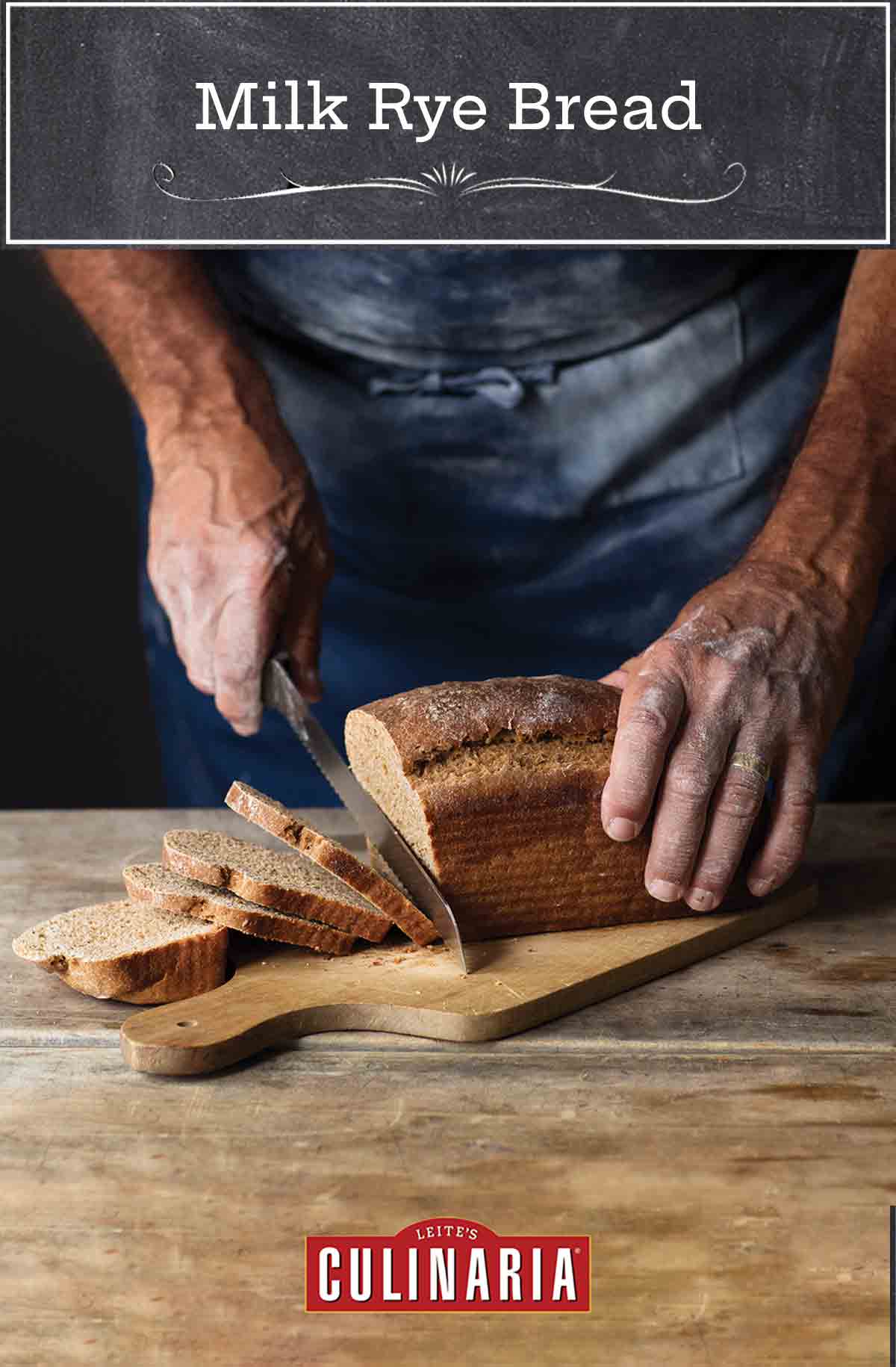
This milk rye bread has a pleasingly subtle (read: not overwhelming) rye flavor and a slight sweetness. In addition to the recipe having that whole-grain goodness thing going for it, the dough is exceptionally easy to work with, making it a cinch for novice bread bakers to toss together. The finished rye bread is marvelous thinly sliced and toasted, torn into chunks and dunked into soup, or made into a mean grilled cheese sandwich.–Stanley Ginsberg

Milk Rye Bread
Equipment
- Two 9-by 5-inch (23-by 8-cm) standard loaf pans or two 9-by 4-inch (23-by 5-cm) Pullman pans
Ingredients
For the sponge
- 2 1/2 cups medium rye flour*
- 1 1/4 cups warm water (105°F | 40°C)
- 7/8 cup Rye Sourdough Starter
For the milk rye dough
- 1 1/4 cups whole milk, at room temperature
- 2 large eggs
- 2 tablespoons unsulphured dark molasses
- 3 1/3 cups bread flour, plus more for dusting
- 3 1/2 cups medium rye flour
- 2 1/4 teaspoons instant yeast
- 1 1/2 tablespoons caraway seed
- 1 tablespoon salt
- Vegetable shortening or butter, for the pan
Instructions
Make the sponge
- In a large bowl, mix the sponge ingredients by hand until incorporated, cover, and ferment at room temperature overnight, 10 to 12 hours. The sponge will be very bubbly, have a clean sour smell, and will have doubled in volume.
Make the dough
- In the bowl of an electric mixer fitted with the paddle attachment, combine the sponge, milk, beaten egg, and molasses and mix at medium-low speed until incorporated, 2 to 3 minutes. Reduce the mixer speed to low and gradually add the flours, yeast, caraway seed, and salt. When the dough starts coming together, after about 2 minutes of mixing, switch to the dough hook and continue mixing until evenly blended, 6 to 8 minutes. Cover and ferment at room temperature until doubled in size, 45 to 90 minutes.
- Generously butter two 9-by 5-inch (23-by 8-cm) standard loaf pans or two 9-by 4-inch (23-by 5-cm) Pullman pans.
- Use a plastic dough scraper and floured hands to transfer the dough to a well-floured work surface, taking care not to handle it any more than necessary. Divide the dough into 2 portions, each weighing about 2 pounds (900 grams). Gently shape each piece into an oblong and place each in a loaf pan. Cover and proof at room temperature until the top of the dough rises above the edge of the pan, 30 to 45 minutes.
- Preheat the oven to 400°F (205°C) with the oven rack in the middle position.
- Bake until the tops of the loaves are a deep golden brown and the internal temperature is at least 198°F (92°C), 30 to 38 minutes. Remove from the pan, move to a rack, and cool completely before slicing.
Notes
*Why is rye good for a sourdough starter?
Whether you’re planning to bake rye bread or just adding rye flour to your sourdough starter, you likely know that rye is a top choice for feeding anything that ferments. Rye uniquely attracts many more yeasts than other flours, it becomes particularly active when introduced to sourdough, and ferments much faster. This makes it an easy choice to add to your sourdough to see some activity and rise in a shorter period of time.
Nutrition
Nutrition information is automatically calculated, so should only be used as an approximation.
Recipe Testers’ Reviews
This milk rye bread is a very simple recipe that will yield 2 nice loaves ideal for toasting and sandwiches. The timings in this recipe were spot on throughout. I used a standard loaf pan and a Pullman pan and both loaves baked up very nicely.
Make certain that you allow this bread to cool completely before slicing. After cooling this bread can be sliced into VERY thin slices which is ALWAYS delicious!
For this recipe, if you’re lucky enough to keep an active sourdough culture (starter) on hand, all you need to do is feed it with rye flour. (Some “experts” may tell you that sourdough starters are so finicky that you simply cannot change them from one flour to another. This really is more fiction than fact. I change my starters all the time, simply based on what flours I have on hand and I have kept starters for years on end.)
If you wish, you can always treat your starter as usual and just put a tablespoon of your daily discard in an even mixture of 100 grams of rye flour and 100 grams of warm water. Tomorrow you’ll have a fully active rye sourdough starter. This approach will allow you to make the bread much sooner than starting a rye culture from scratch. Honestly, you can use your starter as is and there will be no discernible difference.
If you’re just getting into baking bread using sourdough, this is a great recipe to start with. Building a starter with rye is fantastic because the whole grain will really help jump-start the process. And this dough is really easy to work with when shaping. The bread has a nice rye flavor but it’s not so assertive that those new to rye flour would be turned off.
As with any yeast bread, you have to figure out what kind of schedule will work for you. The easiest way to do that is to work backward from when you want to bake. An example of my schedule is as follows:
Day 1: Refresh sourdough culture at 7:30 am
Mix the sponge at 7:30 pm
Day 2: Mix dough at 7:00 am
Let the dough proof for 1 hour
Shape dough and let proof for another 1 1/2 hours (the proofing time will depend on your kitchen’s temperature and how tightly the dough is shaped)
Bake the dough at 9:45 am
The dough was easy to work with and would be great for newcomers to sourdough. My dough needed to rise for 1 1/2 hours. Again, this depends on temperature and how tight the final shape is.
This milk rye bread makes a great grilled cheese, goes wonderfully with lentil soup, and is fantastic with just butter and honey.












Thank you. I’ll try your suggestion. L
Do let us know how it turns out, Lee.
Can I substitute some whole wheat bread flour for the regular bread flour? How much is safe and what added liquids would I need? Thank you
Lee, we haven’t tried this, so we can’t say for sure how much you could substitute. I’d start with swapping 100 grams whole wheat for 100 grams of the bread flour and see how that goes. You may need to add a little extra milk, but start with the suggested volume, and if the dough is very dry you can add a little more.
Looks like a nice recipe. Can you give a weight amount for 7/8 cup of rye starter? (Weight amounts for everything are always appreciated, but measuring out 7/8 cup of starter is, well, a non-starter!) Thanks.
CHN, we completely understand and agree. Baking by weight makes all the difference. (And 7/8 cup is, admittedly, a fussy amount, although we wanted to offer something for those who don’t use a scale.) Actually, to see the weight of any ingredient in any recipe on our site, simply look at the top of the ingredient list and, next to INGREDIENTS, click on the METRIC button and it will change the amounts to weights. You’ll see it’s listed as 250 grams, and you probably use metric, but just in case, that equals 8.8 ounces. Thanks for asking and we look forward to hearing what you think of the bread!